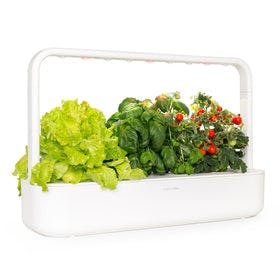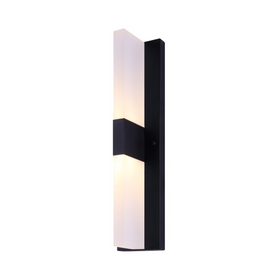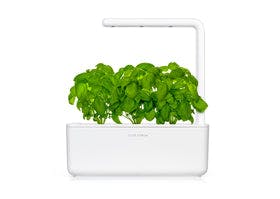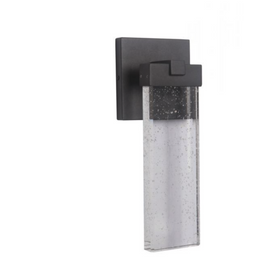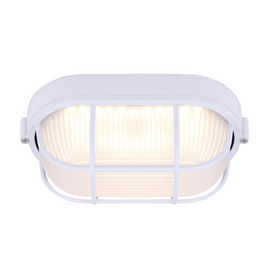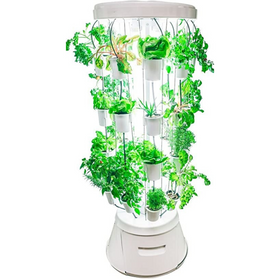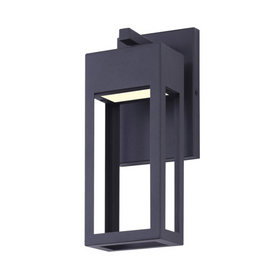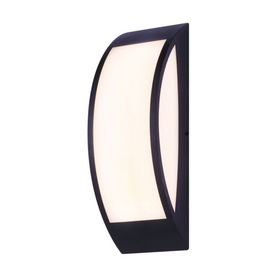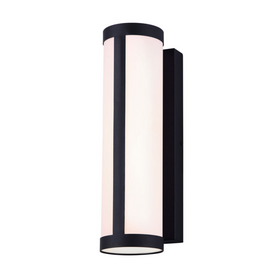
Starting a Garden? The 5 Do's and 5 Don'ts
Last Updated: Mar 28, 2025The last year was an interesting one, filled with sudden shifts and drastic lifestyle changes that gave us extra time to observe our homes and yards. I found myself spending a bit more time on walks, enjoying nearby green spaces, and working in the garden.
When I wasn't busy preparing my crops, I walked the local trails, sneaking peaks at yards as I passed. I was delighted to see many backyard garden beds under construction, like dandelions poking up through a sea of lawns. But as I have learned, and I am sure countless others have, every garden is different. To help you with this season and others to come, I compiled a list of "dos" and "don'ts" that I found to help me get the most out of my harvest.
Table of Contents
- What Should You Not Do When Starting a Garden?
- What Should You Do When Starting a Garden?
What Should You Not Do When Starting a Garden?
In the world of gardening, no two harvests are going to be alike. Depending on climate, season, solar aspect, or garden size, different rules may apply. These are the five things I have learned not to do through my research and, of course, lots of trial and error. They are:
- Forgetting to feed
- Forgetting to adequately cover (or remove) grass from under the planting bed
- Overdoing it - start small
- Failing to address the sun's path in your yard
- Leaving rocks in the soil
Now, let's look at each of these "don'ts"!

Don't Forget to Feed
It can be easy to put aside feeding when you're a new gardener, but the nutrients you do or don't feed your plants will determine your harvest. A well-fed plant has a natural ability to ward off pests and diseases better than a nutrient-deprived equal. They also produce a better tasting product, often with more decadent flavors than their storebought counterparts. If your garden is in a container, feeding is even more critical. With limited space, potted fruits and vegetables will quickly consume any present nutrients.
Of the nutrients that plant uptake for a balanced diet, five serve as your most crucial and are Nitrogen (N), Phosphorous (P), Potassium (K), Calcium (Ca), and Magnesium (Mg). I found that feeding routines can vary depending on your feeding method. Always check your selected fertilizer for feeding instructions first. Then, after applying the nutrients, monitor your plants, and adjust your strategy to best suit your garden.
Don't Forget to Cover or Remove Grass
Lawns are the largest irrigated crop in North America. Over the last year, I've seen a couple of beds quickly constructed and filled with soil in the struggle to convert this open space into food-producing gardens. The only problem is the grass beneath these beds eventually works its way to the surface. It then begins to compete with your garden plants, meaning you have to spend time weeding out the grass.
When you reclaim your lawn for a garden bed, don't forget to cover your grass with cardboard, newspaper, or even turn the sod upside down using a garden fork or spade. This extra step will reduce the likelihood the grass reaches back up through the soil to become a nuisance. But, from experience, when flipping the sod, be sure to cover all green plant material with the root mass, or else it will eventually make its way to the surface.

Don't Overdo It - Start Small
If this is your first year, begin with a few plants. Next year, at most, double it. From my experience, it is easy to get excited with a good year and want to push out three or four times as much the following summer. I did this in my second year of planting. I was exhausting myself daily by the end of the season by having to constantly move a dozen pots twice a day and water them just as many times.
While it may seem like a good idea to have three times the garden and three times the food, it is not. This just results in higher costs, overexertion, and, potentially, the decline of your garden at the end of the year. The best strategy is the permaculture principle of using small and slow solutions. Every year, devote just a little more to your garden to give you time to learn how the new process will affect your workload. After a few years, you'll have the swing of things, and new gardeners will be in awe of your work efficiency.
Don't Forget the Sun
The inspiration to start gardening over the last year brought another startup problem to home gardeners. The biggest issue I have seen in many backyard gardens is their location. While plants will still grow in part-sun and shade, they won't produce a high-quality harvest without adequate six to eight hours of direct sun. I've seen plenty of garden beds tucked away on the side of a house or beside a living cedar fence where the plants would receive at most three to four early afternoon hours of light.
Selecting a space with full sunlight will always yield a larger harvest. The problem is, most homes have already dedicated this space to a large area of grass for family activities. When planning a productive garden, the best thing to do is focus on the sun first.
Knowing how many daylight hours your garden space receives will allow you to prepare your area with the proper plants. Select appropriate crops for your sunlight, whether they're fruit and vegetable crops for full sun or shade-tolerant crops, like herbs and flowers for teas.
Don't Leave Rocks
If you are planting a garden in the ground, you will need to remove rocks down to at least two to three feet. If you don't do this, the roots will hit the rock and be unable to dig down farther and stabilize the plant. Last year I dug up half my garden, removing all stones up to four inches in diameter, and left the other half as it was. As expected, the plants in the cleared soil grew taller and fuller than the other half of the garden.
If you have trouble digging down, consider installing a raised bed and filling it with a planting mix to give your roots the space they need to grow.

What Should You Do When Starting a Garden?
We've explored some of my favorite "Do-Nots" of starting a garden, so let's dive into what we can do to get the most out of our garden harvests. We advise that you:
- Water regularly
- Add mulch
- Remember flowers
- Experiment with your garden, and
- Value diversity
Do Water Regularly
It is best to water in the morning when the sun is low and before the day becomes too warm. This strategy gives the water time to soak into the ground and the roots. If you are watering in a container garden, check on your plants at least twice a day to ensure that their soil hasn't completely dried out. Allowing the potting soil to become this dry is damaging to the plant!
While all plants need adequate water to survive, certain plants require lots of water to produce healthy fruits. Cucumbers are big ones where inconsistent watering will result in misshapen or bitter fruits.

Do Add Mulch
Mulch is one of those things that's often overlooked for a garden but seen as beneficial elsewhere in the yard. Incredibly, the difference mulch will make for your garden comes in the benefit of water retention and soil coolness.
When mulching for a garden, I have found straw as a helpful garden mulch. It covers the soil, and its albedo (light color) allows it to reflect some excess light towards the crops. When planting fruiting trees, be sure to add wood chips, as trees prefer fungal root zones, which wood chips promote.

Do Remember Flowers
Pollinators benefit our garden and the world. Still, it can be easy to forget about the bugs and the bees that help our garden throughout the year. These insects do the heavy lifting of the backyard garden by ensuring thorough pollination of your plants.
Lure them into your yard with nearby patches of flowers planted directly beside the bed or a container that you can move as you wish. When choosing your flowers, be sure to select a variety of seasonal bloomers that will provide for pollinators at every stage of the growing season (early spring through fall). Having flowers available from the start of the growing season through the end reminds the pollinators and beneficial insects that your yard has food throughout the growing seasons.
Do Experiment With Your Garden
Like I've said before, every garden is different, and each year of growth will bring unique challenges and opportunities. If you purchased five plants last year, consider regrowing your favorite three and try two new ones. Maybe you started with purchased seedlings this year; then perhaps next year, try growing a few plants from seeds. If you tried square foot gardening, why not polyculture or hügelkultur or maybe even make space for your next garden bed on the front lawn!
Experiment with what you do and keep learning! It doesn't matter if your garden is in a container, a planter bed, or right in the ground. Regardless of the growing space, your garden is your domain to learn.

Do Value Diversity
When looking to harvest a family favorite, it is essential to have a few duplicates of the same type of tomato or peas. But when planting a more extensive garden, be sure to have various plants in your garden and surrounding space. Having a diversity of plant types helps protect your garden from being decimated by a pest that may crave only a particular dish.
Also, having a collection of adequately companioned plants can attract beneficial insects that may alleviate your pest problems. By researching which plants work well together, you can design your garden to produce an abundant crop and protect itself from pests and disease.

Every home and garden will be different, each with its challenges that a gardener will have to overcome. These "dos" and "don'ts" are only a few things that I have found helpful in my time gardening with both containers and in-ground gardens.
If I could choose one more thing for every gardener to do, it would be to use that first Permaculture principle of "Observe and Interact." By exploring your garden at least once a day, taking time to look at the leaves, soil, and fruits, you will begin to learn what your plants need. And before long, you'll be crafting a personal list of things that work best for you and your thriving garden.
Tanner Sagouspe
Tanner Sagouspe has a Masters in Environmental Management and is a Permaculture Designer who promotes tackling the climate crisis at home.

